There are legendary historic horses like Rustam’s Rakish, Alexander’s Bucephallus, Anna Sewell’s protagonist Black Beauty, the Trojan Horse, Hidalgo Mustang, and many others. According to Linnaeus, the trinomial name of the domestic horse is Equus ferus caballus. Horses are variously classified and, according to one system, horse types are: Autre Que Pur-Sang (AQPS), Horse, Bronco, Cayuse, Cob Horse, and Courser. Most commonly they are classified according to their temperament, color, breed, and size, etc. as cold blooded, warm blooded, or hot blooded. The Mongolian Tarpan, also known as Przhevaslsky horses, named after the Russian Explorer Nikolai Przhevaslsky, are the only living wild horses presently.
1. Old Henry Clay
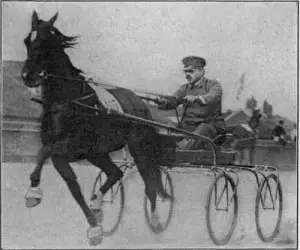
Old Henry Clay, also known as ‘America’s National Thoroughbred Trotting Horse’ and ‘Father of American Trotting Horses,’ was born in 1837, and the foal was bought by Colonel WilliamWadsworth of Seneso, Livingston County, New York. The horse was 61 inches tall (15 and a quarter hands high in terminology of the horse professionals). After the climax of his trotting period, Old Henry Clay was used for breeding. He died in Lodi, New York in 1867. Old Henry’s bones were dug up about 145 years after his death, and the Natural Science Establishment in Rochester mounted them, and the skeleton was gifted to the United States National Museum on April 12, 1881.
2. Dan Patch
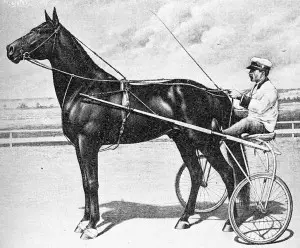
Dan Patch, the distinguished racing horse of his time, was foaled in Oxford, Indiana on April 29, 1896 and died in July, 1916. Dan Patch broke 14 world records in the early 1900s. He was a standard bred American stallion sired by Joe Patchen and his dam Zelica. He was named after his owner Dan Massner and his sire Joe Patchen. Both the owner and the horse died within 13 hours of the death of one another. His record for the fastest mile (1m: 55s) by a harnessed horse during a trial in 1906 lasted for the upcoming 32 years. More than 100,000 people came to see him at the 1904 Kansas State Fair. Dwight Eisenhower visited the horse with his parents. Harry Truman recalled him from his childhood memories.
3. Man O’ War

Man O’ War was foaled on March 29, 1917 in Nursery Stud Farm, Lexington, Kentucky and died in Faraway Farm on November 1, 1947. He was sired by Fairplay and his dam Mahubas the U.K. Triple Crown Champion, Rock Sand. Man O’ War is regarded as one of the best thoroughbred race horses of all time. He won 20 of 21 races and pursed $249,465. He was a chestnut-colored stallion. At the age of three years, Man O’ War weighed about 520 Kgs. 1,150 lbs. with a 72-inch girth. He stood 16 hands 2 inches, 167.6 centimeters, high. Blood Horse magazine ranked him #1 of the Top 100 U.S. Thoroughbred Champions of the 20th Century. Man O’ War was inducted into the National Museum of Racing Hall of Fame in 1957.
4. Little Sorrel
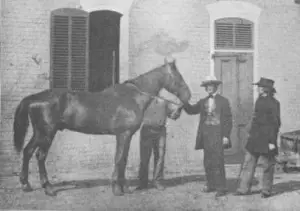
Also known as ‘Fancy,’ Little Sorrel was born in Somers, Tolland County, Connecticut, U.S, in 1850 and died in 1886 and was buried in the Virginia Military Institute Museum, Lexington,Virginia, U.S. This horse was gifted to Mrs. Jackson by the confederates who captured him from the Union forces. After his horse Big Sorrel did not prove in the battle and was afraid of gunfire, General Thomas Jackson took the Little Sorrel for his ride. The General was fatally wounded during the battle by his own men who mistakenly took him for the enemy in the battle at Chancellorsville. At the age of 35, Little Sorrel was too infirmed to move and got fractures after the hoist used to lift him slipped accidentally and he died. Little Sorrel was so famous he was stuffed and displayed at the Virginia Military Institute Museum, Lexington, Virginia.
5. Asp-i-Laila

Asp-i-Laila, literally meaning ‘Horse of Laila the beloved,’ is a chapter in Indian history. Maharaja Ranjit Singh of Punjab, India was a horse lover. Having heard of this horse he was bent upon getting it from the tribal owner at any cost. The tribal chief did not surrender the horse, which therefore was gotten after much bloodshed as Maharaja informed a contemporary traveler, Baron Charles Hunter, that he had never seen such a perfect horse before, and that it cost his state a loss of 12,000 soldiers and money worth Rs. 6,000,000. Having seen the horse in the Royal stables in 1935, Baron Charles Hunter described the horse as, ‘It is the finest horse belonging to the Maharaja. With round his knees he has gold bangles; he is a dark grey with black legs, 13 years old and a full 16 hands high.’ The horse was stuffed and displayed in the Lahore Fort Museum.
6. Comanche
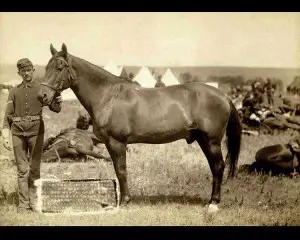
It is customary that victories give fame, but contrarily in the case of Comanche was the defeated battle of the Little Bighorn fought under the command of General Custer that Comanche emerged as the sole survivor of the lost battle on June 25, 1876. Comanche was born in 1862 belonging to the Mustang linage. The horse was captured during a wild horse roundup. He was gelded and sold to the U.S. Army for $90. Weighing 925 pounds and standing 15 hands high, the horse became the favorite ride of captain Myles Keogh of the 7th Cavalry. Comanche was found severely wounded two days after the battle was over. He was brought on a steamer to Fort Lincoln located 950 miles away from the site of the battle. He was exempted from all duties and liked to roam in posts and flower gardens. Comanche died of colic on November 7, 1891 and is currently displayed in a glass showcase kept under controlled conditions of temperature and humidity at the University of Kansas Museum of Natural History, Dyche Hall in Lawrence, Kansas.
7. Burmese, Queen Elizabeth’s Favorite Horse

The Royal Canadian Mounted Police presented to the Queen Burmese, a distinguished black mare in April, 1969. How much the Queen liked her may be well assessed by the fact that she rode her in 18 consecutive birthday parades. Famous sculptor Susan Velder created a larger-than-life-sized bronze statue of Her Majesty riding her favorite horse. The statue was unveiled by Her Majesty during the centennial celebrations. It is located north of the legislative building at the south building of the flower garden.
8. Al Adeed Al Shaqab
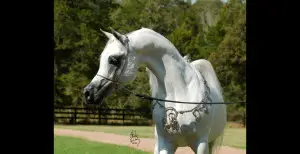
Judged by people from all around the world, Al Adeed Al Shaqab has been constantly awarded perfect scores, and he stands as the world champion stallion. His offspring is prized throughout the world. Sired by Ansata Halim Shah, Al Adeed al Shaqab was the most reputed stallion of the 20th century. He was a full pedigree (Ansata Halim Shah x Sundar Aliysayyah), 1995 grey stallion bred under the straight Egyptian Programme. He won the Qatar International Arabian Championship six times. He also won the U.S. Egyptian Event as the Champion Stallion, All Nations Cup Champion Stallion, and many other world class events.
9. Lexington
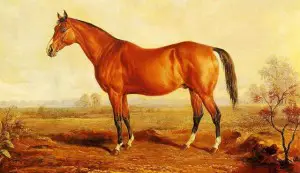
Lexington was born in 1850 and stood 15 hands 3 inches (63 inches) high. On April 2, 1855 he set a record by running 4 miles in 7 minutes, 19.75 seconds at the Metaire Course in New Orleans. He is best known as a sire to many famous mares and racers. Lexington died on July 1, 1875 at Woodburn Farm, Woodford County, Kentucky and was buried in a coffin in front of the stables housing his harem. His owner A. J .Alexander donated the bones to the United States National Museum. The skeleton is displayed at the International Museum of the Horse in Lexington, Kentucky.
10. Haleb
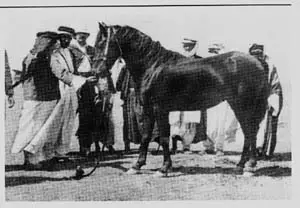
Haleb was the famous Arab stallion who beat 19 Morgan horses and won the Justin Morgan Cup in June, 1907. Haleb was also known as the ‘Pride of the Desert’ and stood 14.2 hands high, weighing 960 pounds. The stallion originated from the Anezeh Arabian breed of horses and was bred by the Gomussa tribe of the Sebba Anezeh. He was sired by a stallion of the family of Sueyman Sebba of the Southern Desert, and his mother was the last outstanding Maneghi Sbeyel mare. He died at the age of 8 on November 10, 1909.
Conclusion:
Sometimes social relationships are stronger than genetic relationships. Great apes are genetically much closer to human beings compared with horses and dogs which are quite far flung on the genetic ladder. It is, however, noteworthy that on account of their domestication, the latter are much closer friends of human beings, and horses stand out prominently among them. Horses are the first toys of human beings and his last carriers too. About two million people lined the route on the day of Lady Diana’s funeral, and more than half a billion people viewed the procession on television. It is said, ‘The only sound was the clatter of horses’ hooves and the peal of a church bell.’










Leave a Reply